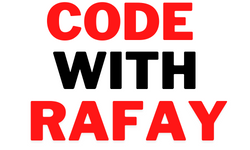What is HTML?
HTML is utilized to make electronic records (called pages) that are shown on the Internet. Each page contains a few associations with different pages called hyperlinks. Each page you see was composed utilizing one form of HTML.
HTML code guarantees the appropriate arranging of text and pictures for your Web program. Without HTML, a program wouldn't know how to show text as components or burden pictures or different components. HTML likewise gives an essential construction of the page, whereupon Flowing Templates are overlaid to change its appearance. One could consider HTML the bones (structure) of a page, and CSS as its skin (appearance).
What is HTML?
What does a HTML tag resemble?
What does HTML resemble?
What is HTML5?
What does HTML5 resemble?
Step by step instructions to make and view HTML.
Which document expansions are utilized with HTML?
Is HTML a programming language?
The most effective method to articulate HTML.
Related data.
HTML and website architecture help and backing.
What does a HTML tag resemble?
HTML tag
As displayed in the HTML label model above, there aren't a huge number. Most HTML labels have an initial tag containing the label name, label credits, an end tag containing a forward slice, and the label name being shut. For labels that don't have an end label like <img>, it is best practice to end the tag with a forward slice.
Most labels are contained in a not exactly and more prominent than point sections, and all that between the open and close tag is shown or impacted by the tag. In the model over, the <a> tag is making a connection called "PC Trust" that is highlighting the hope.html document.
Tip
See our HTML and Website architecture help page for a full posting of HTML labels.
What does HTML resemble?
The following is an illustration of a fundamental site page written in HTML with a portrayal of each part and its capability.
<!DOCTYPE HTML PUBLIC "-//W3C//DTD HTML 4.01 Momentary//EN" "https://www.w3.org/TR/html4/loose.dtd">
<html>
<head>
<title>Example page</title>
<meta http-equiv="Content-Type" content="text/html; charset=windows-1252">
</head>
<body>
<h1>This is a heading</h1>
<p>This is a <b>example</b> of a fundamental HTML page.</p>
</body>
</html>
The crate above contains the vital fixings to an essential site page. Every one of the lines are made sense of beneath in additional detail.
The DOCTYPE line portrays what variant of HTML the page was written in so a Web program can decipher the text that follows.
The <html> opening label tells the program that it is perusing HTML code.
The <head> segment contains data about the page, like its title, meta labels, and where to find the CSS record.
The <body> segment contains all that is visible on the program. For instance, all the text seen here is contained in the body labels.
The <h1> tag is the apparent heading of the page.
The <p> tag is a section of text. Most site pages (like this one) have a few section labels.
Contained in the passage is the <b> label that bolds the word model in the section.
At last, the end labels wrap every one of the above labels.
See our HTML and Website architecture help for a full posting of HTML labels.
What is HTML5?
HTML5 is the update made to HTML from HTML4 (XHTML follows an alternate rendition numbering plan). It involves similar fundamental standards as HTML4, yet adds a few new labels and qualities which take into consideration better semantics and for dynamic components that are initiated utilizing JavaScript. New components include: <article>, <aside>, <audio>, <bdi>, <canvas>, <datalist>, <details>, <embed>, <figure>, <figcaption>, <footer>, <header>, <keygen>, <mark>, <meter>, <nav>, <output>, <progress>, <rp>, <rt>, <ruby>, <time>, <track>, <video>, and <wbr>. There are likewise new information types for structures, which incorporate tel, search, url, email, datetime, date, month, week, time, datetime-nearby, number, reach, and variety.
With the rising development to keep construction and style discrete, some styling components were taken out. Likewise labels with openness issues or saw next to no utilization were additionally eliminated. These following components ought to at this point not be utilized in HTML code: <acronym>, <applet>, <basefont>, <big>, <center>, <dir>, <font>, <frame>, <frameset>, <noframes>, <strike>, and <tt>. HTML5 likewise streamlines the doctype statement to the label in the accompanying box.
<!doctype html>
What does HTML5 resemble?
As displayed underneath, the HTML5 code is basically the same as the previous HTML4 model, yet is cleaner and has a changed doctype tag.
<!doctype html>
<html>
<head>
<meta charset="utf-8">
<title>Example page</title>
</head>
<body>
<h1>This is a heading</h1>
<p>This is an illustration of an essential HTML page.</p>
</body>
</html>
The most effective method to make and view HTML
Since HTML is a markup language, it tends to be made and seen in any word processor whenever saved with a .htm or .html document expansion. In any case, most find it more straightforward to plan and make pages in HTML utilizing a HTML manager.
When the HTML record is made, it very well may be seen locally or transferred to a web server to be seen web based utilizing a program.
HTML document
Which document augmentations are utilized with HTML?
HTML documents utilize either the .htm or .html record augmentation. More established variants of Windows (Windows 3.x) just permit three-letter record expansions, so they utilized .htm rather than .html. Be that as it may, both record expansions have a similar importance, and either might be utilized today. That being said, we prescribe adhering to one naming show as specific web servers might favor one augmentation over the other.
Note
Site pages that are made utilizing a prearranging language like Perl, PHP, or Python have an alternate expansion despite the fact that they just show HTML in the source code.
view of the vowel sound while articulating HTML, you would utilize "an" rather than "a" before the condensing in your composition.





.png)
.png)
0 Comments